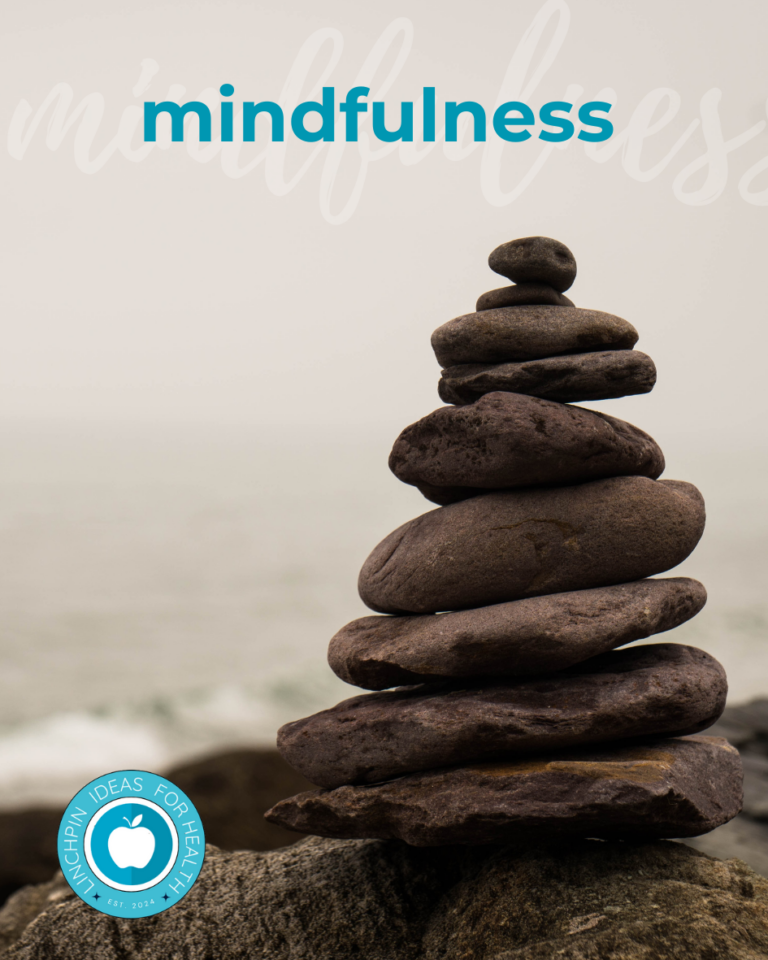
Linchpin Ideas for Health
Our mission is to help individuals fulfill their potential and reach their goals for a healthy and fulfilling life. At Linchpin Ideas for Health, we believe that each person is unique and has their own individual needs and goals when it comes to health. That's why we focus on providing a wide range of helpful information so that individuals can find what they need to create their own experience of wellness. We believe that by becoming the best version of yourself, you can make a positive impact on the world around you.
BLOG
So what exactly is wellbeing?
Wellbeing is a broad term that encompasses both physical and mental health. It is a state of being in which an individual feels satisfied with their life and is able to cope with daily stressors. It includes factors such as happiness, life satisfaction, and a sense of purpose. And as it turns out, exercise has a significant impact on all of these aspects of wellbeing.Mood Booster
One of the most well-known benefits of exercise is its ability to improve mood. This is due to the release of endorphins, also known as “feel-good” hormones, during physical activity. These endorphins act as natural painkillers and also produce a feeling of euphoria, which can help to reduce stress and anxiety. Regular exercise has been shown to decrease symptoms of depression and anxiety and can even be as effective as medication in treating these conditions.Brain Benefits
But the benefits of exercise on mental health go beyond just mood improvement. Exercise has also been linked to improved cognitive function and decreased risk of cognitive decline and dementia. This is because exercise promotes the growth of new brain cells and strengthens the connections between them. In fact, a study published in the Journal of Aging and Physical Activity found that older adults who engaged in regular physical activity had better memory, attention, and processing speed than their sedentary peers.Soul Benefits
In addition to the mental health benefits, exercise also plays a crucial role in promoting self-esteem and body image. Regular physical activity can improve body composition, increase muscle tone, and boost energy levels, all of which contribute to a more positive self-perception. This is especially true for women, who are often bombarded with societal pressures to look a certain way. Exercise allows individuals to take control of their own health and well-being and can lead to a greater sense of self-worth.Nature’s Melatonin
Furthermore, exercise has been shown to have a positive impact on sleep quality. A study published in the Journal of Clinical Sleep Medicine found that individuals who engaged in aerobic exercise four times a week had better sleep quality and reported feeling more alert during the day. This is because exercise helps to regulate the body’s circadian rhythm, which is responsible for our sleep-wake cycle. Getting enough high-quality sleep is crucial for overall wellbeing, as it allows our bodies to repair and recharge.Overall Wellness
Exercise also has a direct impact on physical health, which in turn contributes to overall wellbeing. Regular physical activity can reduce the risk of chronic diseases such as heart disease, diabetes, and certain types of cancer. It also strengthens the immune system, making individuals less susceptible to illnesses. When our physical health is in good shape, we are better equipped to handle the demands of daily life and can experience a greater sense of overall wellbeing. In conclusion, the link between exercise and overall wellbeing is undeniable. From improving mood and mental health to promoting self-esteem and physical health, exercise plays a crucial role in our overall well-being. Incorporating regular physical activity into our daily lives is a simple and effective way to improve our quality of life and achieve a greater sense of satisfaction and happiness. So, lace up your sneakers and get moving – your body and mind will thank you for it.When it comes to living a healthy lifestyle, having a wellness regimen is essential. A wellness regimen is a plan that incorporates different aspects of wellness, such as physical, mental, and emotional well-being, into your daily routine. It is not just about going to the gym or eating healthy, but it is a holistic approach to taking care of your overall wellness. Planning a wellness regimen may seem overwhelming, but with a few simple steps, you can create a plan that works for you and helps you achieve your wellness goals.
1. Identify Your Goals
The first step in planning a wellness regimen is to identify your goals. What do you want to achieve through this regimen? Do you want to lose weight, reduce stress, or improve your overall health? Having a clear idea of your goals will help you create a plan that is tailored to your specific needs. It is also important to set realistic and achievable goals to avoid feeling discouraged.
2. Make a Schedule
Once you have identified your goals, the next step is to make a schedule. Having a schedule will help you stay organized and committed to your wellness regimen.
Start by looking at your daily routine and find pockets of time where you can fit in your wellness activities. It could be waking up 30 minutes earlier to go for a morning walk, scheduling a yoga class after work, or meal-prepping on the weekends. Having a schedule will also help you stay consistent and make your wellness activities a habit.
3. Incorporate Different Aspects of Wellness
A well-rounded wellness regimen should include different aspects of wellness. This includes physical, mental, emotional, and social well-being. Physical activities such as exercise, yoga, or sports are important for maintaining a healthy body. Mental wellness can be achieved through activities like meditation, journaling, or reading. Emotional well-being can be improved through therapy, spending time with loved ones, or engaging in hobbies. And social well-being can be achieved by connecting with others, volunteering, or joining a wellness community.
Including all of these activities in your goals and schedule will make sure you experience whole-life wellness.
4. Find Activities You Enjoy
One of the keys to sticking to a wellness regimen is finding activities that you enjoy. If you dread going to the gym, find other forms of physical activities that you enjoy, such as dancing or hiking. If you don’t like cooking, try meal delivery services or find simple and healthy recipes that you can prepare in a short amount of time. When you enjoy what you are doing, it becomes easier to stay committed to your wellness regimen.
5. Stay Accountable
Having someone to hold you accountable can make a big difference in sticking to your wellness regimen. Find a friend or family member who shares similar wellness goals and plan activities together. Joining a wellness community or hiring a wellness coach can also help you stay accountable and motivated.
6. Be Flexible
Remember that life happens, and it is okay to be flexible with your wellness regimen. If you miss a workout or indulge in unhealthy food, don’t beat yourself up. Instead, focus on getting back on track and continue with your plan. It is also important to listen to your body and make adjustments to your regimen accordingly.
In conclusion, planning a wellness regime is a great way to prioritize your physical, mental, and emotional well-being. By following the six steps above, you can create a plan that works for you and helps you achieve your wellness goals.
Remember to be patient and consistent, and don’t forget to celebrate your progress along the way. Your wellness is worth investing in, and a well-planned regimen can help you live a happier and healthier life.
In today's fast-paced and chaotic world, it's easy to get caught up in the hustle and bustle of daily life and lose touch with ourselves. We are bombarded with endless to-do lists, deadlines, and constant distractions from technology. This can lead to stress, anxiety, and a sense of being overwhelmed. However, there is a solution to finding peace and balance amidst the chaos – mindfulness.
Mindfulness is the practice of being fully present in the moment and paying attention to our thoughts, feelings, and surroundings without judgment. It is about being aware of our thoughts and emotions and learning to observe them without reacting or becoming overwhelmed by them.
The Concept
The concept of mindfulness may seem simple, but in reality, it takes time and effort to cultivate. It involves intentionally bringing our attention to the present moment and letting go of any distractions and worries. By doing so, we can tap into a state of calm and clarity, allowing us to better handle the challenges of daily life.
The Breath
One of the key aspects of mindfulness is the focus on the breath. Our breath is always with us, and it serves as an anchor to the present moment. When we pay attention to our breath, we become aware of our body and any tension or discomfort we may be feeling. By taking slow, deep breaths, we can release this tension and bring a sense of relaxation to our body and mind.
Observation
Another important aspect of mindfulness is being non-judgmental. Often, we are quick to judge ourselves and others, which can lead to negative thoughts and emotions. However, by practicing non-judgment, we can observe our thoughts and feelings without labeling them as good or bad. This allows us to let go of any self-criticism and accept things as they are.
Benefits
The benefits of mindfulness are numerous and have been backed by scientific research. Regular practice of mindfulness has been shown to reduce stress, anxiety, and depression. It also improves focus, memory, and overall well-being. By being fully present and aware, we can make better decisions, improve our relationships, and find a sense of inner peace.
The Practice
Incorporating mindfulness into our daily lives doesn't have to be a daunting task. It can be as simple as taking a few minutes each day to sit in silence and focus on our breath. It can also be practiced while doing daily activities such as eating, walking, or even washing the dishes. The key is to bring our attention to the present moment and let go of any distractions.
One of the great things about mindfulness is that it can be practiced anytime and anywhere. It doesn't require any special equipment or training. All it takes is a commitment to be present and a willingness to let go of distractions and judgments.
So, why not give mindfulness a try? Start by setting aside a few minutes each day to sit in silence and focus on your breath. As you continue to practice, you may notice a sense of calm and clarity seeping into other areas of your life. Remember, mindfulness is a journey, not a destination, so be patient and kind to yourself as you embark on this path of self-discovery and inner peace.


